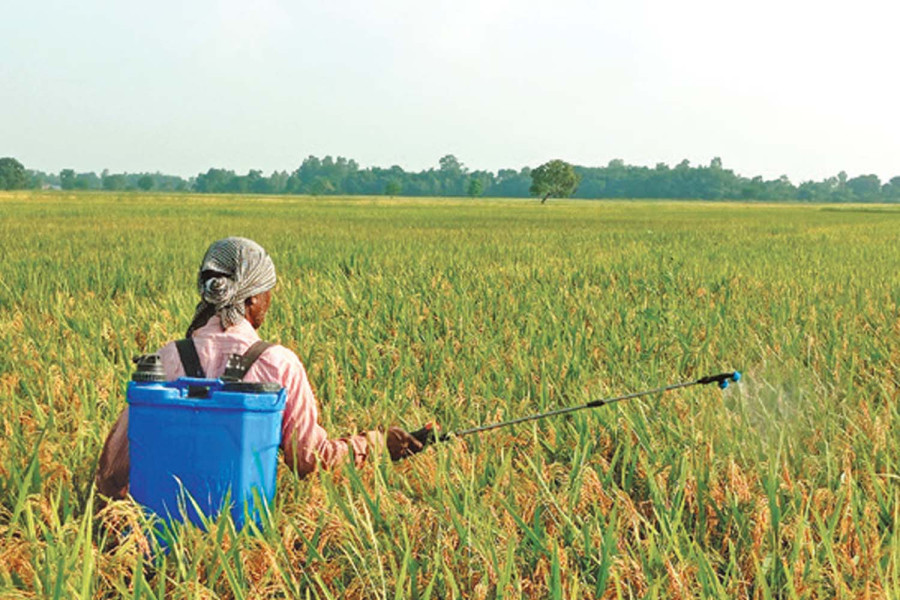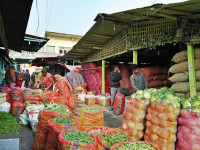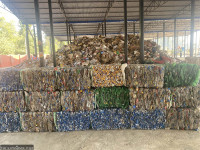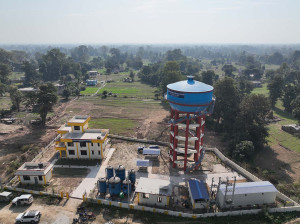Money
Nepal hauls historic paddy harvest amid harsh climate events
Production is expected to grow by 4.04 percent this fiscal year, reaching a new high of 5.95 million tonnes.
Sangam Prasain
Heavy monsoon rains this fiscal year brought with them death and destruction in Nepal. But they also resulted in some good news.
The agriculture ministry announced on Friday that Nepali farmers anticipate a record-breaking paddy harvest this fiscal year. Nepal recorded one of the fastest paddy transplantation rates in many decades, courtesy of “above-normal rainfall,” supporting higher paddy output.
A double-digit harvest in Madhesh province, where insufficient rainfall had long been a problem, boosted the national paddy production.
The year-on-year paddy production could grow by about 4.04 percent this fiscal year, reaching a new record of 5.95 million tonnes, according to a preliminary estimate by the Ministry of Agriculture and Livestock Development.
“This is the highest volume of paddy production on record,” said Matina Joshi Vaidya, the ministry spokesperson.
The growth in paddy output could offer some respite to the KP Sharma Oli-led administration. The country’s economy is otherwise grappling with low output, which results in higher imports.
Based on the government’s minimum support price, the total value of paddy, excluding byproducts like straw and husk, is Rs213.20 billion. Paddy is transplanted across most of Nepal in June and harvested in October-November.
The ministry attributed this optimism to favourable weather conditions in the transplantation season, which runs from June to July, and improved access to quality seeds and fertilisers.

Officials noted that while some regions faced significant crop losses, other areas experienced higher-than-expected yields, offsetting the overall impact of the floods.
The heavy rainfall in late September triggered floods and landslides in most parts of the country, causing a loss of Rs46.68 billion to the Nepali economy.
According to the preliminary loss and damage assessment report released by the National Disaster Risk Reduction and Management Authority under the home ministry in November, the floods and landslides from September 26 to 28 caused significant damage to the physical infrastructure sector, followed by the social and productive sectors.
The assessment showed that 65,380 hectares of agricultural land and 26,698 livestock were affected, resulting in an estimated economic loss of Rs5.88 billion. Seven irrigation projects were hit, leading to a loss of Rs1.35 billion.
“Yes, floods and landslides did affect a few areas in Bagmati province. But the country’s food baskets, mainly the southern Tarai belt, remained unaffected, which resulted in higher paddy output,” said Vaidya.
Paddy output boomed in Madhesh province, which occupies 26 percent of the country’s total paddy fields.
Five of the eight districts of Madhesh province are drought-prone, which affects the national output annually. A massive outflow of youths to foreign lands, creating a shortage of labourers for agricultural activities, has added to the difficulties of local farmers in the province.
This fiscal year, the regular and heavy downpours proved to be a boon for farmers in the province.
Agro experts say that due to regular and abundant monsoon rains, Madhesh province surpassed its neighbour, Koshi, in terms of paddy transplantation rate in June-July for the first time.
Experts say transplanting dates differ from region to region.
Early transplantation has some advantages.
Early transplanted paddy mostly escapes pest attack, and this reduces the additional cost of inputs such as pesticide application.
It also ensures timely next cycle of crops on the same field.
The ministry estimated that paddy output in Madhesh province would jump 10.70 percent to 1.48 million tonnes this fiscal year, with the highest productivity of 3.96 tonnes per hectare.
After Madhesh, Koshi province saw a slight growth in output, increasing by 2.16 percent, to 1.46 million tonnes.
Lumbini province was the third-highest paddy producer, with a harvest of 1.36 million tonnes, up 4.06 percent from the previous year.
The Sudurpaschim province also saw production growth. The ministry said that year-on-year output there might jump to 636,212 tonnes, a 6.19 percent rise.
However, the other three provinces—Bagmati, Gandaki and Lumbini—saw a negative output growth.
Paddy is a staple crop in Nepal, and a strong harvest could bolster food security and provide much-needed economic relief to rural communities struggling with low incomes.
This fiscal year, paddy was transplanted in 1.42 million hectares, including spring paddy transplanted or sown in 104,712 hectares in March-April. According to the ministry, the spring paddy output has been estimated at 520,808 tonnes.
According to Vaidya, the ministry’s spokesperson, average productivity was also at a record high of 5.38 tonnes per hectare.
Paddy is Nepal’s highest-earning farm commodity and tens of thousands of farmers rely on its income. Economists reckon high output may cool down inflation and boost the economy.
This fiscal year, the monsoon entered eastern Nepal three days earlier than the normal onset date of June 10. According to the Department of Hydrology and Meteorology, it withdrew from eastern Nepal on October 12, delayed by ten days.
The 112-day-long monsoon brought 1,691.3 millimetres of rainfall, according to rainfall data from the past 30 years. This was 16 percent more than the department had anticipated.
Nepal recorded a record high paddy harvest of 5.62 million tonnes in 2020-21, thanks to a surplus of farm hands with migrant workers returning home amid Covid lockdowns.
Adequate fertiliser supplies and a good monsoon helped them produce a bumper harvest.
However, paddy output shrank the following year.
In 2021-22, the harvest dropped by 8.74 percent year-on-year to 5.13 million tonnes due to unseasonal October rainfall. As per the ministry’s report, the downpours damaged paddy crops worth Rs8.26 billion, the highest losses on record.
In 2022-23, paddy output rose 7 percent to 5.48 million tonnes.
About 90 percent of the world’s rice is grown and consumed in Asia. As a staple food for more than half of the world’s population, it is one of the most important crops to ensure global food security.




 19.12°C Kathmandu
19.12°C Kathmandu















